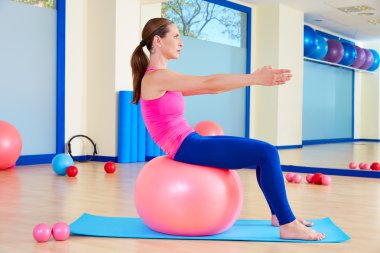
Best Exercise After Cortisone Injection In Knee (5 Helpful Exercises)
Best exercise after cortisone injection in knee include gentle stretching routines and low-impact activities like swimming or cycling, aiding in rehabilitation and mobility enhancement. Incorporating these exercises post-injection promotes gradual strengthening of the knee joint while minimizing strain.
In the realm of knee care, where every step can feel like a mountain climb, finding the best exercise regimen post-cortisone injection becomes akin to discovering a hidden treasure map. Picture this: your knee, once a source of discomfort and limitation, now holds the promise of newfound strength and resilience.
Like a phoenix rising from the ashes, the right exercises following a cortisone injection can breathe life back into your movements, unveiling a pathway to restored mobility and vitality. So, strap on your metaphorical adventure boots as you embark on a journey to unearth the gems of post-injection exercise, transforming your knee from a battleground to a playground of possibility.

Best Exercise After Cortisone Injection In Knee
After receiving a cortisone injection in the knee, it’s crucial to choose exercises that promote healing and strengthen the surrounding muscles. The best exercise in this scenario is low-impact activities like swimming, cycling, or water aerobics. These exercises reduce stress on the knee joint while improving flexibility and mobility.
Exercise Selection After Cortisone Injection in Knee
Following a cortisone injection in the knee, selecting the right exercises is paramount for recovery and maintaining joint health. Engaging in low-impact activities is highly recommended, as they minimize strain on the knee while still allowing for effective workouts.
Low-Impact Activities for Optimal Recovery
Swimming, cycling, and water aerobics are excellent choices post-cortisone injection. These exercises help improve flexibility, mobility, and overall joint function without placing excessive stress on the knee.
Optimizing Healing and Strengthening
Incorporating exercises that target the muscles surrounding the knee can further aid in recovery. Leg lifts, gentle stretches, and range-of-motion exercises can strengthen the knee and improve stability.
Maintaining Consistency for Long-Term Benefits
Consistency is key when it comes to post-injection exercise routines. Regular, low-impact workouts can help maintain joint health, reduce inflammation, and prevent future injury flare-ups.
Understanding Cortisone Injections for Knee Pain
What Cortisone Injections Are
Cortisone injections, medically known as corticosteroid injections, are a common treatment for various inflammatory conditions. These injections deliver a potent anti-inflammatory medication directly into the affected area, providing targeted relief from pain, swelling, and inflammation.
Administered by a healthcare professional, cortisone injections typically contain a synthetic version of cortisol, a hormone naturally produced by the adrenal glands. Cortisol plays a crucial role in regulating the body’s immune response and inflammation levels.
Cortisone injections are commonly used to treat conditions such as arthritis, tendonitis, bursitis, and certain types of joint pain. They are particularly effective when other conservative treatments like rest, physical therapy, or oral medications have failed to provide sufficient relief.
The procedure involves the injection of the cortisone medication directly into the affected joint, tendon, or bursa. The injection site is often numbed with a local anesthetic to minimize discomfort during the procedure. Patients may experience temporary soreness or a slight increase in pain immediately after the injection, but this usually subsides quickly.
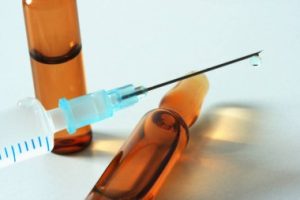
How Cortisone Injections Work in Treating Knee Pain
Cortisone injections serve as a potent tool in the management of knee pain, particularly when caused by inflammation or conditions like osteoarthritis. The mechanism behind cortisone injections lies in the potent anti-inflammatory properties of corticosteroids. When administered directly into the knee joint, cortisone acts to suppress the immune response and reduce inflammation, thereby alleviating pain and swelling.
This localized treatment targets the specific area of discomfort, offering rapid relief for individuals struggling with knee pain. Moreover, cortisone injections can also aid in improving mobility and functionality, allowing individuals to resume daily activities with greater ease.
Risks and Benefits of Cortisone Injections
Cortisone injections, commonly used to alleviate inflammation and pain, come with a set of both risks and benefits. On the positive side, these injections can provide rapid relief from conditions such as arthritis, tendonitis, and bursitis, reducing pain and inflammation, and enhancing mobility.
Additionally, cortisone injections can be particularly beneficial for individuals who cannot tolerate oral medications or whose conditions don’t respond well to other treatments. However, there are risks associated with cortisone injections as well. These include potential side effects such as temporary pain at the injection site, thinning of the skin, and changes in skin color.
In some cases, repeated cortisone injections may also weaken nearby tissues, leading to potential tendon rupture or cartilage damage. Furthermore, individuals with certain medical conditions such as diabetes or those prone to infections may experience complications from cortisone injections. Therefore, while cortisone injections offer significant benefits in managing pain and inflammation, it’s crucial to weigh these against the potential risks and consider alternative treatments where appropriate.
Importance of Exercise After Cortisone Injection
Preventing stiffness and muscle weakness
Exercise is crucial after receiving a cortisone injection, particularly for preventing stiffness and muscle weakness. While cortisone injections can provide relief from pain and inflammation, they can also lead to muscle atrophy and decreased range of motion if not followed by appropriate physical activity.
Moreover, targeted exercises can prevent the development of scar tissue and promote healing. By incorporating a tailored exercise regimen into post-injection recovery, individuals can optimize the benefits of cortisone treatment while minimizing potential side effects, ensuring a smoother and more effective recovery process.
Promoting joint flexibility and mobility
Cortisone injections can be a valuable tool in managing joint pain and inflammation, but their effectiveness can be further enhanced when coupled with regular exercise. Exercise plays a crucial role in maintaining joint flexibility and mobility, which can be compromised by conditions such as arthritis or injury, prompting the need for cortisone treatment in the first place.
After receiving a cortisone injection, engaging in appropriate exercises can helps in improving overall joint function. By incorporating exercises tailored to the specific joint and condition, individuals can maximize the benefits of the cortisone injection and promote long-term joint health.
Strengthening muscles around the knee
Exercise after a cortisone injection is crucial, particularly when focusing on strengthening the muscles around the knee. By engaging in targeted exercises, individuals can enhance the stability of the knee joint, improve flexibility, and prevent future injuries. Strengthening exercises, such as squats, lunges, and leg presses, help to build muscle around the knee, providing better support and reducing strain on the joint.
Additionally, exercises that target balance and proprioception can improve coordination and reduce the risk of falls. Incorporating a consistent exercise routine after a cortisone injection can not only maximize the benefits of the injection but also promote long-term joint health and mobility.
Enhancing overall knee health and function
Exercise is crucial for enhancing overall knee health and function post-cortisone injection. It aids in maintaining optimal circulation, reducing inflammation, and promoting healing. By staying active, individuals can experience improved knee function and reduced risk of future complications. These exercises are vital for maximizing the benefits of cortisone injections and promoting long-term joint health and mobility.
Guidelines for Exercising After Cortisone Injection
Consultation with Healthcare Provider
Before engaging in any exercise regimen following a cortisone injection, it is imperative to consult with a healthcare provider to ensure safety and effectiveness. Cortisone injections are commonly used to alleviate pain and inflammation in joints or soft tissues, but they can also affect the body’s response to physical activity.
Depending on individual circumstances, such as the underlying condition being treated and the location of the injection, certain exercises may need to be modified or temporarily avoided to prevent further injury or complications. A healthcare provider can offer personalized guidance based on factors such as the type and dosage of corticosteroid used, as well as the individual’s overall health and fitness level. By seeking professional advice, individuals can develop a tailored exercise plan that promotes recovery while minimizing the risk of adverse effects.
Understanding Post-Injection Restrictions and Precautions
After receiving a cortisone injection, it is crucial to adhere to specific guidelines when it comes to exercising. Understanding post-injection restrictions and precautions can help ensure optimal recovery and avoid potential complications. Typically, it’s advised to avoid strenuous exercise or activities that could strain the injected area for a few days following the injection.
This allows the cortisone to take effect and reduces the risk of aggravating the area. Additionally, it’s important to listen to your body and not push through any pain or discomfort during exercise. Avoid high-impact activities or heavy lifting until cleared by your healthcare provider. Remember to stay hydrated, engage in proper warm-up and cool-down routines, and prioritize rest and recovery to support the healing process.
Gradual Progression of Exercise Intensity and Duration
After receiving a cortisone injection, it’s crucial to follow specific guidelines when resuming exercise to ensure optimal recovery and minimize the risk of complications. One key principle is the gradual progression of exercise intensity and duration. Starting with gentle activities such as walking or light stretching can help ease back into physical activity without putting too much strain on the affected area.
As days progress, gradually increase the intensity and duration of exercise sessions. It’s essential to strike a balance between pushing oneself to improve fitness and avoiding overexertion that could exacerbate any lingering discomfort or compromise the effectiveness of the cortisone treatment.
Listening to the Body and Avoiding Overexertion
Listen to your body’s signals during exercise and avoid overexertion. Pay attention to any discomfort or pain and adjust your activity level accordingly to prevent aggravating the injection site.
Best Types of Exercises After Cortisone Injection in the Knee
Low-Impact Aerobic Exercises
After receiving a cortisone injection in the knee, it’s crucial to choose exercises that promote healing and strengthen the surrounding muscles without exacerbating discomfort. Among the best types of exercises are low-impact aerobic exercises. These exercises, such as swimming, cycling, or using an elliptical machine, are gentle on the knees while still providing cardiovascular benefits.
They help improve blood flow to the affected area, aiding in the delivery of nutrients and oxygen for tissue repair. Additionally, low-impact aerobic exercises help maintain joint flexibility and reduce stiffness, crucial for promoting mobility and preventing further injury. Incorporating these exercises into a post-cortisone injection rehabilitation program can contribute significantly to a smoother recovery process and long-term knee health.
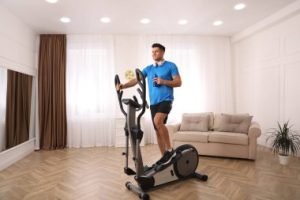
Range of Motion Exercises
After receiving a cortisone injection in the knee, engaging in range of motion exercises is often recommended as one of the best types of exercises for rehabilitation. These exercises focus on gently moving the knee joint through its full range of motion to maintain flexibility and prevent stiffness. They can include simple movements such as knee flexion and extension, as well as more dynamic exercises like leg swings and heel slides.
Range of motion exercises not only help to alleviate discomfort but also aid in restoring normal joint function. It’s crucial to perform these exercises under the guidance of a healthcare professional to ensure they are appropriate for individual needs and to prevent any further injury. Gradually increasing the intensity and duration of these exercises can contribute significantly to the recovery process following a cortisone injection in the knee.
Strengthening Exercises
Strengthening exercises are particularly beneficial. These exercises help to stabilize the knee joint and surrounding muscles, reducing the risk of future flare-ups and improving overall joint function. Some of the best types of strengthening exercises after a cortisone injection include leg presses, squats, lunges, and leg curls.
These exercises target the quadriceps, hamstrings, and glutes, which are crucial for supporting the knee joint and maintaining proper alignment. Additionally, incorporating exercises that focus on balance and stability, such as single-leg stands or step-ups, can further enhance joint stability and reduce the likelihood of reinjury. It’s important to start with light resistance and gradually increase intensity as tolerated, while always paying attention to proper form to avoid exacerbating any existing issues.
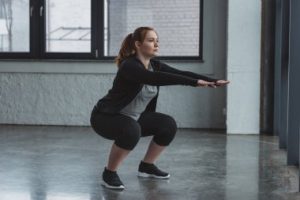
Balance and Stability Exercises
After receiving a cortisone injection in the knee, engaging in balance and stability exercises can be highly beneficial for rehabilitation and strengthening. These exercises focus on improving proprioception, muscle control, and joint stability, which are crucial for preventing further injury and promoting healing.
Incorporating exercises such as single-leg stands, stability ball exercises, and balance board drills can help restore balance and coordination while reducing the risk of falls. Additionally, exercises that target the muscles surrounding the knee, such as quadriceps and hamstring strengthening exercises, can help provide added support and stability to the joint.
Gradually incorporating these exercises into a comprehensive rehabilitation program can aid in improving mobility, reducing pain, and enhancing overall knee function after a cortisone injection. However, it’s essential to consult with a healthcare professional or physical therapist before beginning any exercise regimen to ensure safety and effectiveness.
Functional Exercises
After receiving a cortisone injection in the knee, it’s essential to engage in the right types of exercises to optimize recovery and maintain joint function. Among the best exercises post-injection are functional exercises. These exercises focus on movements that mimic activities of daily living and help improve strength, stability, and mobility in the knee joint.
Examples include squats, lunges, step-ups, and balance exercises. Functional exercises not only target the muscles around the knee but also promote better coordination and proprioception, which are crucial for preventing further injury and enhancing overall knee health. Incorporating these exercises into a rehabilitation program can aid in restoring function and reducing pain, allowing individuals to return to their regular activities with confidence.
Sample Exercise Routine After Cortisone Injection in the Knee
Warm-up
Begin with light cardiovascular activity for 5-10 minutes to increase blood flow and prepare the muscles.
Range of Motion Exercises
Engage in knee flexion and extension exercises, ankle pumps, and stretches for the quadriceps and hamstrings to improve flexibility and mobility.
Strengthening Exercises
Incorporate quadriceps, hamstring, and gluteal muscle strengthening exercises, such as leg press, leg extensions, hamstring curls, and hip thrusts, to rebuild strength and stability.
Balance and Stability Exercises
Enhance balance and stability through single-leg stances and Bosu ball exercises like squats and lunges to support knee function and prevent future injury.
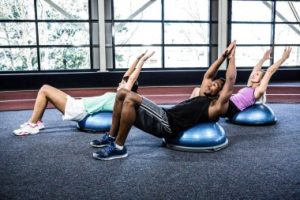
Cool-down
Conclude with gentle stretching targeting major muscle groups for 5-10 minutes to reduce muscle tension and promote recovery.
Precautions and Tips for Safe Exercise After Cortisone Injection
Avoiding high-impact activities
When resuming exercise post-cortisone injection, steer clear of high-impact activities such as running or jumping to prevent undue strain on treated areas. Opt for low-impact exercises like swimming or cycling to ease back into physical activity safely.
Listening to the body and recognizing signs of overexertion
Listen attentively to your body’s cues and be mindful of signs indicating overexertion, such as increased pain or fatigue. Pace yourself accordingly and modify your workout intensity as needed to avoid exacerbating discomfort post-injection.
Using proper form and technique during exercises
Ensure proper form and technique during exercises to minimize the risk of injury, particularly in areas recently treated with cortisone injections. Focus on stability and alignment to distribute stress evenly and prevent undue strain on vulnerable joints or muscles.
Maintaining adequate hydration and nutrition
Maintain optimal hydration and nutrition levels to support post-injection recovery and enhance exercise performance. Stay hydrated by drinking plenty of water and consume a balanced diet rich in nutrients essential for tissue repair and muscle function.
Reporting any unusual pain or discomfort to healthcare provider
Stay vigilant and report any unusual pain or discomfort to your healthcare provider promptly. Communicate any unexpected symptoms or changes in condition post-injection to ensure timely assessment and appropriate management of potential complications.
Frequently Asked Questions (FAQ) – Best Exercises After Cortisone Injection in Knee
Q1. What is a cortisone injection, and why might I need one in my knee?
A. Cortisone injections are a common treatment for inflammation and pain in the knee joint. They contain a corticosteroid medication that can help reduce swelling and discomfort, often used to manage conditions like arthritis or bursitis.
Q2. Is it safe to exercise after receiving a cortisone injection in my knee?
A. Yes, it’s generally safe to exercise after a cortisone injection. However, it’s essential to follow your doctor’s recommendations regarding the type and intensity of exercise, as well as any specific precautions based on your individual condition.
Q3. What are the best exercises to do after a cortisone injection in my knee?
A. Low-impact exercises are typically recommended, such as swimming, cycling, or walking. These activities help maintain mobility and strength in the knee joint without putting excessive strain on it.
Q4. Can I engage in high-impact exercises like running or jumping after a cortisone injection?
A. While some high-impact activities may be possible after a cortisone injection, it’s essential to proceed with caution and consult your doctor first. These activities can place added stress on the knee joint and may not be suitable for everyone, depending on the underlying condition being treated.
Q5. Are there specific stretching exercises that can help improve knee mobility after a cortisone injection?
A. Yes, gentle stretching exercises can be beneficial for improving flexibility and reducing stiffness in the knee joint. Your doctor or a physical therapist can recommend specific stretches tailored to your needs and condition.
Q6. How soon after a cortisone injection can I start exercising?
A. It’s typically recommended to wait at least 24 to 48 hours after a cortisone injection before engaging in exercise. This allows the medication to take effect and reduces the risk of aggravating the injection site.
Q7. Are there any exercises I should avoid after a cortisone injection in my knee?
A. It’s best to avoid exercises that put excessive strain on the knee joint, such as heavy weightlifting or high-impact activities like jumping or running. These can increase the risk of injury or aggravating the injection site.
Q8. Can I do strength training exercises for my legs after a cortisone injection?
A. Yes, strength training exercises can be beneficial for maintaining muscle tone and supporting the knee joint. However, it’s essential to use proper form and avoid exercises that cause pain or discomfort.
Q9. How can I tell if I’m overdoing it with exercise after a cortisone injection?
A. Listen to your body. If you experience increased pain, swelling, or discomfort during or after exercise, it’s essential to scale back or modify your activities. Consulting with your doctor or physical therapist can also provide guidance on adjusting your exercise routine.
Q10. Should I continue with any prescribed rehabilitation exercises after a cortisone injection?
A. Yes, if your doctor or physical therapist has prescribed specific rehabilitation exercises, it’s essential to continue with them as directed. These exercises are designed to help improve knee strength, stability, and function, which can enhance the effectiveness of the cortisone injection treatment.
Conclusion
In conclusion, finding the best exercise regimen following a cortisone injection in the knee is crucial for promoting optimal recovery and restoring function. While individual preferences and the severity of the condition may vary, incorporating a combination of low-impact activities such as swimming, cycling, and gentle stretching exercises can help maintain joint mobility, strengthen surrounding muscles, and alleviate pain.
It’s essential to consult with a healthcare professional or a physical therapist to tailor an exercise plan that suits your specific needs and ensures safe rehabilitation. By committing to a well-rounded exercise program, individuals can enhance their overall knee health, improve range of motion, and regain the confidence to engage in daily activities with reduced discomfort.